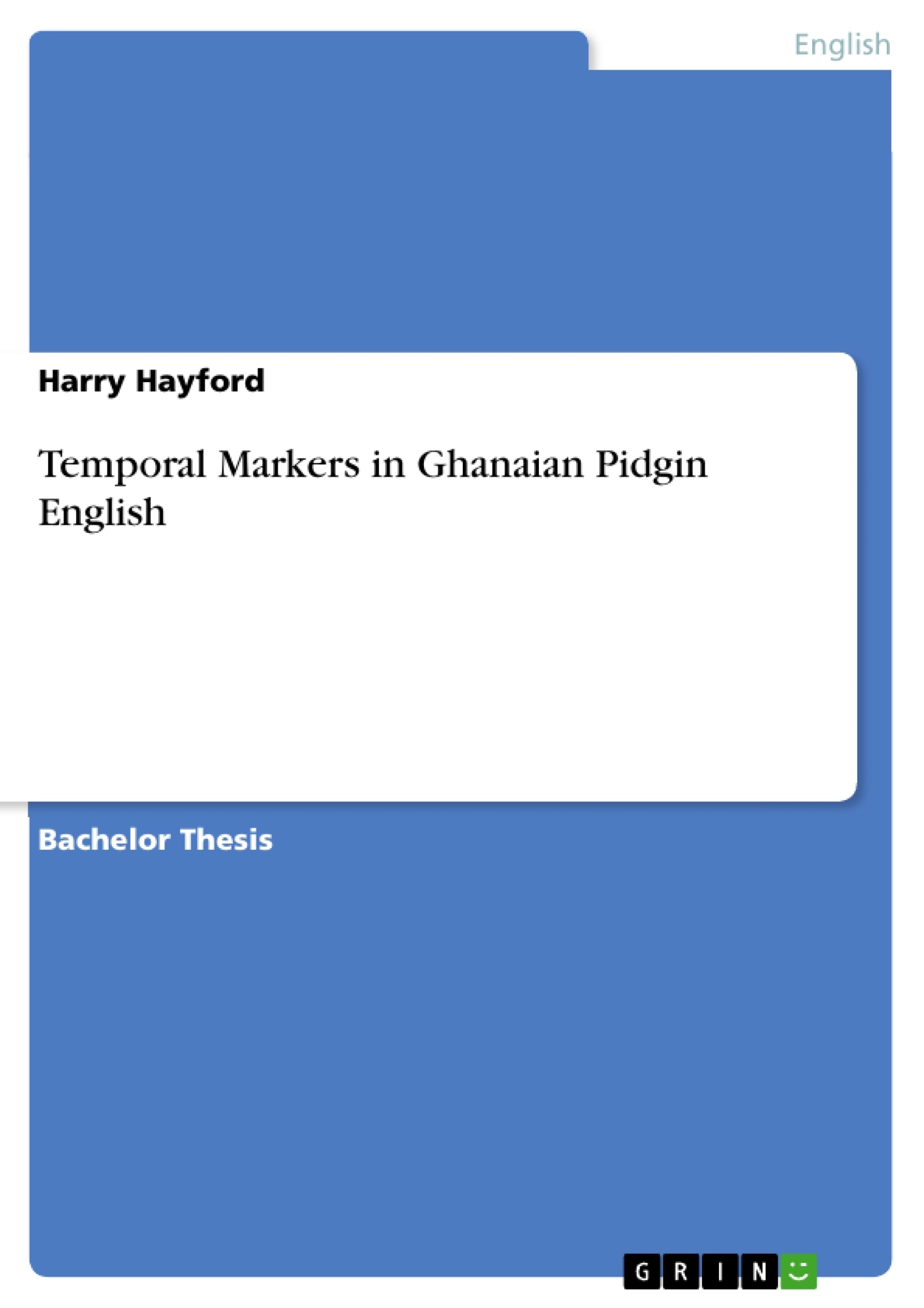This study looks at how tense and aspect is realized in Ghanaian Pidgin English and compares it to Standard English. This research examines temporal markers in Ghanaian Pidgin English as well.
The theoretical framework that serves as a bedrock for the analysis is the superstate and substrate theory. The methodology comprises recordings of conversation of students of the University of Cape Coast and excerpts from television programmes. The research found out that the bare form of the verb is used to realize pastime, present time and perfective meaning.
While preverbal markers like “go” and “dey” are used to accompany the bare form of the verb to realize present time, future time and progressive meaning. The implication of these findings are that they contribute to studies in World English, studies in pidgins/creoles and studies in temporality across languages. The work shows that GPE has temporal markers that are crucial in organizing messages.
The study is guided by the following questions:
1. What temporal markers exist in Ghanaian Pidgin English?
2. What temporal meanings do they realize?
Firstly, the work deals with the background to the study, research questions, purpose and significance of the study and other relevant introductory issues. Afterwards, it will look at related literature, theoretical framework and other important issues. It will introduce the methodology for the study. Lastly, the research data will be analysed and assessed.
Table of Contents
- CHAPTER ONE
- INTRODUCTION
- Background to the study
- Statement of problem
- Purpose of study
- Research Questions
- Significance of Study
- Organisation of study
- CHAPTER TWO
- REVIEW OF RELATED LITERATURE
- Introduction
- Sociolinguistic Context of Ghana
- History of Pidgin in Ghana
- Conceptual Review
- Concept of Tense
- Present Tense
- Past Tense
- Future Tense
- Aspect
- Progressive Aspect
- Theoretical Framework
- Superstrate and Substrate
- Empirical review
- Chapter summary
- CHAPTER THREE
- RESEARCH METHODOLOGY
- Introduction
- Research Design
- Data source and sample size
- Data analysis procedure
- Chapter summary
- CHAPTER FOUR
- ANALYSIS OF DATA
- Introduction
- Temporal Markers in GPE
- The bare form of the verb
- The preverbal marker “dey”
- The preverbal marker goes
- Chapter summary
Objectives and Key Themes
This research investigates temporal markers in Ghanaian Pidgin English (GPE). The study utilizes the superstrate and substrate theory to analyze GPE’s grammatical structure, particularly the use of temporal markers to convey past, present, and future tenses. Data is sourced from recordings of conversations and television programs. The study aims to contribute to research on World Englishes, pidgins/creoles, and temporality across languages.- The use of temporal markers in GPE
- The role of superstrate and substrate theory in understanding GPE grammar
- The influence of English on GPE's grammatical structures
- The unique features of temporal marking in GPE
- The contribution of this research to broader linguistic studies
Chapter Summaries
- Chapter One: Introduction - This chapter provides an overview of the research, including the background to the study, the statement of the problem, the purpose of the study, the research questions, the significance of the study, and the organization of the study.
- Chapter Two: Review of Related Literature - This chapter discusses the sociolinguistic context of Ghana, the history of Pidgin in Ghana, and provides a conceptual review of tense and aspect. It also delves into the theoretical framework of superstrate and substrate and explores relevant empirical studies. The chapter concludes with a summary of the reviewed literature.
- Chapter Three: Research Methodology - This chapter outlines the research design, data sources, sample size, and data analysis procedures employed in the study. The chapter concludes with a summary of the methodological approach.
- Chapter Four: Analysis of Data - This chapter presents the analysis of temporal markers in GPE, focusing on the use of the bare form of the verb, the preverbal marker “dey”, and the preverbal marker “go”. The chapter concludes with a summary of the data analysis findings.
Keywords
The main keywords and focus topics of this study are Ghanaian Pidgin English, temporal markers, superstrate and substrate theory, tense and aspect, World Englishes, pidgins/creoles, and temporality. The study investigates the grammatical features of GPE, specifically focusing on how temporal markers are used to indicate different time frames and aspects. By analyzing the data, the research aims to contribute to the understanding of GPE's unique linguistic features and its place within the broader field of World Englishes.- Quote paper
- Harry Hayford (Author), 2021, Temporal Markers in Ghanaian Pidgin English, Munich, GRIN Verlag, https://www.grin.com/document/1163910



